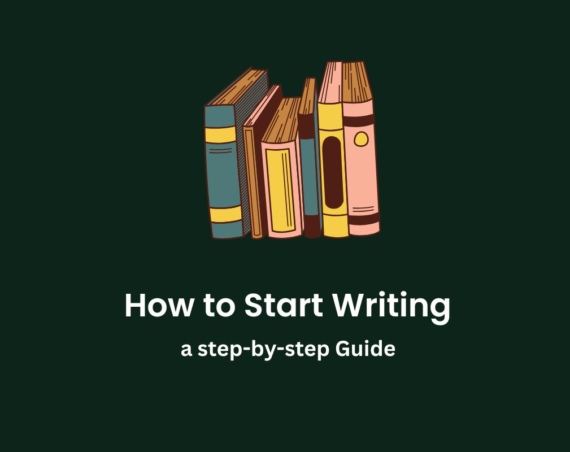Are you ready to start writing your novel? Do you have a brilliant idea that you can’t wait to put on paper? If so, congratulations! You’ve taken the first step towards becoming a novelist.
But before you dive into the details of your story, you need to have a clear and solid outline. An outline is a roadmap that guides you through the plot, the characters, the themes, and the scenes of your novel.
It helps you organize your thoughts, avoid plot holes, and create a satisfying arc for your readers.
In this article, I’ll show you how to outline a novel in a simple and effective way. You’ll learn how to brainstorm your main idea, how to structure your outline, and how to refine it until it’s ready for writing.
By the end of this article, you’ll have a clear vision of your novel and a plan to make it happen. Let’s get started!
What Is a Novel’s Outline?
Outlining is a process of planning the main events and scenes of your story before you start writing. It can help you avoid plot holes, inconsistencies, and weak characters. Outlining can also make writing easier and faster, as you have a clear roadmap to follow.
There are many ways to outline a novel, and different methods work for different writers. Some prefer to use detailed outlines that cover every chapter and scene, while others like to use loose outlines that only sketch the major plot points. Some use software tools or apps to organize their outlines, while others use index cards or sticky notes. Some write their outlines in prose, while others use bullet points or diagrams.
What Should Your Outline Consist Of?
There is no right or wrong way to outline a novel, as long as it works for you and your story. However, there are some common elements that most outlines should include, such as:
1. The Premise
This is the basic idea or concept of your novel. It should answer the questions: What is your story about? Who are the main characters? What is the main conflict? What is the genre and tone of your novel?
2. The Hook
This is the opening scene or chapter of your novel that grabs the reader’s attention and introduces the main character and the main problem. It should make the reader curious and eager to read more.
3. The Inciting Incident
This is the event or situation that sets the story in motion and forces the main character to act. It should raise the stakes and create a sense of urgency for the main character.
4. The Plot Points
These are the key events and turning points that shape the course of the story. They should advance the plot, reveal new information, create complications, and challenge the main character. They should also follow a logical cause-and-effect sequence and build up to a climax.
5. The Climax
This is the most intense and exciting part of the story, where the main character faces the final obstacle or confrontation with the antagonist. It should resolve the main conflict and show how the main character has changed or grown.
6. The Resolution
This is the aftermath of the climax, where the loose ends are tied up and the consequences of the main character’s actions are shown. It should provide a satisfying and meaningful ending for the reader.
These elements can be arranged in different ways, depending on the structure of your novel.
Common Novel’s Outline (Structures)
You can use these structures as templates or guides for your own outline, or you can create your own structure that suits your story best. The important thing is to have a clear vision of what you want to write and how you want to write it. There are many types of novel outlines, but some of the most common ones are:
1. Three-Act Structure
One of the most popular structures is the three-act structure, which divides the story into three parts: Act 1 (Setup), Act 2 (Confrontation), and Act 3 (Resolution). Each act has its own plot points and subplots that support the main plot.
2. Hero’s Journey
Another common structure is the hero’s journey, which follows the stages of a mythical quest or adventure. The hero’s journey consists of 12 steps: Ordinary World, Call to Adventure, Refusal of the Call, Meeting with the Mentor, Crossing the Threshold, Tests, Allies, Enemies, Approach to the Inmost Cave, Ordeal, Reward, The Road Back, Resurrection, and Return with Elixir.
3. The Snowflake Method
This is a detailed and iterative outline that starts with a one-sentence summary of your story and expands it into a full-fledged novel. The snowflake method involves writing a synopsis, character profiles, scene lists, and drafts in increasing levels of complexity.
4. The Save The Cat Method
This is a plot-driven outline that consists of 15 beats or milestones that your story should hit. The save the cat method is based on the idea that your protagonist should do something likable or sympathetic in the beginning to make the reader care about them. The save the cat method is often used in screenwriting and genre fiction.
Conclusion
Outlining a novel can be a fun and creative process that helps you shape your story and prepare for writing. It can also save you time and frustration by preventing writer’s block and rewriting. However, outlining is not a rigid or fixed plan that you have to follow exactly. You can always change or modify your outline as you write, if you discover new ideas or directions for your story. Outlining is a tool, not a rule.
I hope this article has given you some useful tips on how to outline a novel. Happy writing!



